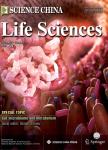Cell orientation of swimming bacteria:From theoretical simulation to experimental evaluation
Cell orientation of swimming bacteria:From theoretical simulation to experimental evaluation作者机构:Max Planck Institute.for Chemical Ecology Beutenberg Campus Jena 07745 Germany
出 版 物:《Science China(Life Sciences)》 (中国科学(生命科学英文版))
年 卷 期:2012年第55卷第3期
页 面:202-209页
核心收录:
学科分类:0710[理学-生物学] 0830[工学-环境科学与工程(可授工学、理学、农学学位)] 083001[工学-环境科学] 07[理学] 08[工学] 09[农学] 071007[理学-遗传学] 0901[农学-作物学] 0836[工学-生物工程] 090102[农学-作物遗传育种]
主 题:bacterial motion cell orientation hydrodynamic interaction Brownian motion wall effect
摘 要:The motion of small bacteria consists of two phases:relatively long runs alternate with intermittent stops,back-ups,or tumbles,depending on the *** polar monotrichous bacteria,the flagellum is anchored at the cell pole inherited from the parent generation(old pole) and is surrounded by a chemoreceptor *** forward swimming,the leading pole is always the pole recently formed in cell division(new pole).The flagella of the peritrichous bacterium Escherichia coli often form a bundle behind the old *** cell orientation and receptor positioning during runs generally mimic that of monotrichous *** encountering a solid surface,peritrichous bacteria exhibit a circular motion with the leading pole dipping *** polar monotrichous bacteria also perform circular motion near solid boundaries,but during *** this case,the leading pole points *** little is known about behavior near milieu-air *** simulations have revealed some of the mechanisms underlying these phenomena,but leave many questions *** biophysics with molecular techniques will certainly advance our understanding of bacterial locomotion.



